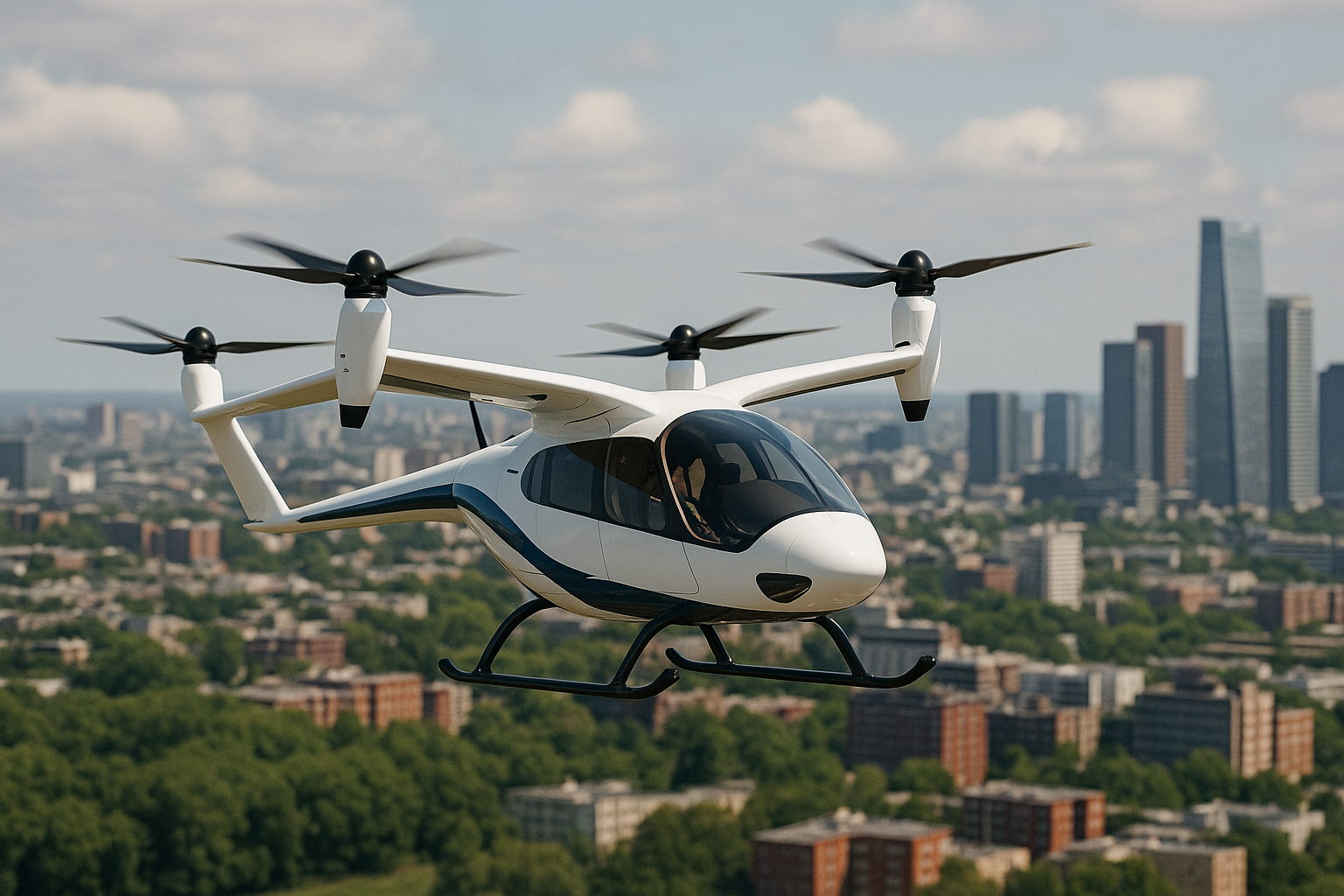Quiet Skies Ahead: Machine Learning Enables Noise-Aware UAM Flight Planning
Researchers from the University of California, Irvine, and Iowa State University have developed a certified machine learning framework that predicts and manages eVTOL noise in real time. By integrating this model into motion planning, they ensure Urban Air Mobility routes remain efficient while complying with strict community noise regulations.

Urban Air Mobility (UAM) has been hailed as the next great transformation in city life, offering electric vertical take-off and landing aircraft (eVTOLs) to bypass congested roads and cut down travel times. However, behind this futuristic promise lies a fundamental barrier: noise. A study conducted by researchers at the University of California, Irvine, and Iowa State University highlights that even though eVTOLs rely on cleaner electric propulsion, their noise footprint is still significant enough to raise alarms. Communities near schools, hospitals, and residential neighborhoods are particularly vulnerable. Regulators such as the FAA and EASA are already aware of this concern, drafting ordinances that restrict both peak and sustained noise levels. Without a credible and certifiable way to ensure compliance, large-scale UAM adoption risks being stalled by public pushback. This is the problem the researchers aim to solve with a novel framework that blends certified machine learning models with physics-based insights to integrate noise considerations directly into flight planning.
Certified Learning Models Built for Noise Prediction
The cornerstone of the framework is the use of monotonic neural networks, a specialized form of machine learning that incorporates the physics of noise generation and propagation directly into its architecture. Traditional aeroacoustic simulations, while highly accurate, are far too computationally heavy for real-time planning and can take days to complete. In contrast, these neural networks produce fast, reliable predictions of noise levels while guaranteeing provable error bounds. This certification is not just an academic flourish, it ensures that predictions can be trusted when flights are scheduled on demand. Without this, operators could inadvertently send aircraft along routes that exceed local noise thresholds. To train these models efficiently, the team introduces active sampling, which strategically chooses data points where predictions are most uncertain. This avoids wasting resources on redundant information and dramatically improves accuracy. The results are striking: while uniform sampling methods left prediction errors as high as 20 decibels, the active sampling approach cut that error margin down to about five to eight decibels with fewer samples, making the system practical for continuous urban deployment.
Planning Routes with Noise at the Core
Having a reliable noise prediction model is only half the battle. The researchers embed this model into the widely used RRT* motion planning algorithm, ensuring that noise ordinances are enforced alongside safety and efficiency constraints. The innovation lies in exploiting the monotonic nature of noise, knowing that louder outcomes reliably result from higher rotor speeds, lower altitudes, or closer proximities. This allows the algorithm to prune infeasible trajectories early, avoiding wasted computation. The motion planner, therefore, generates only those flight paths that comply with both instantaneous noise thresholds (to prevent sudden loud bursts) and equivalent continuous thresholds (to guard against sustained exposure). In practice, this means the planner can create noise-aware routes in real time, adjusting for regulations without sacrificing operational feasibility.
From Simulations to Scenarios: Vahana in the Sky
The framework was tested using simulations of Airbus’s Vahana eVTOL in urban settings, under both single-aircraft and multi-aircraft conditions. In the single-aircraft scenario, the planner adapted flexibly to noise constraints. When rules were lenient, the aircraft flew fast, direct routes to its destination. When restrictions tightened, the vehicle compensated by flying higher, slower, or longer, sometimes increasing total travel time by up to 50 percent but always staying compliant. The multi-aircraft simulations revealed an even more complex dynamic: once one vehicle consumed part of a community’s noise “budget,” subsequent flights were forced to take alternate routes or higher paths. Later aircraft often faced less efficient trajectories, but the algorithm balanced these trade-offs fairly, distributing noise impacts across flights and preventing any neighborhood from being overwhelmed. Visualizations in the study vividly demonstrate how flight paths bent around sensitive zones and adapted to evolving conditions, showcasing the framework’s practical promise.
Toward Quieter Skies and Public Acceptance
Another powerful feature of the framework is physics-based pruning of control inputs. Rather than testing every possible combination of speed and altitude, the planner discards those guaranteed to be noisy, such as high rotor speeds at low altitudes, before they even enter consideration. This reduced the number of iterations needed to find compliant plans, especially under strict noise ordinances, and proved significantly faster than uniform random strategies. Together, these innovations form a comprehensive solution that not only anticipates noise but actively avoids it. The implications extend beyond academia. For regulators, it offers a credible method for setting enforceable noise rules. For industry players, it provides a practical tool for scaling operations without alienating the public. And for communities, it reassures that their comfort and health will not be sacrificed in the name of futuristic convenience. The authors argue persuasively that embedding community sensitivity into the very core of motion planning is the only way UAM can succeed on a large scale. By fusing physics, certified neural networks, and real-time trajectory planning, the research paves the way for quiet, livable skies over bustling cities.
The study represents a critical step in reconciling the ambitious goals of Urban Air Mobility with the realities of urban life. It shows that the promise of faster, cleaner air transport need not come at the expense of community acceptance. By building noise awareness into the heart of both prediction and planning, the researchers have created a framework that is technically robust, socially sensitive, and scalable. If implemented widely, it could transform UAM from a disruptive novelty into a sustainable part of city infrastructure, proving that the future of flight can be both efficient and quiet.
- READ MORE ON:
- Urban Air Mobility
- eVTOLs
- UAM
- FAA
- neural networks
- Airbus’s Vahana eVTOL
- FIRST PUBLISHED IN:
- Devdiscourse










